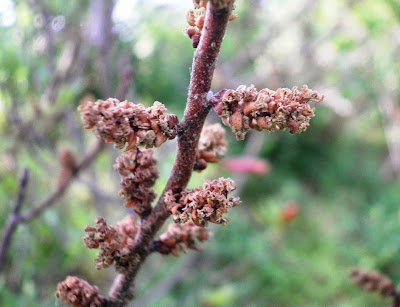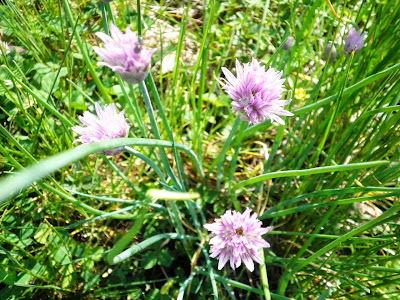Suzan Tobias Scholl, Herbalist, C.N.M.A. aladyinthyme@outlook.com
From the May/June '12 issue of The Essential Herbal Magazine
Whether you are a Beekeeper, a gardener, or just a happy observer of nature, you can promote a healthy environment for our happy pollinators and provide an area that is attractive to these special friends.
Did you know that there are different kinds of pollinating bees? If you are not a beekeeper, you may not realize that there are pollinating bees that do not live in hives. We often speak of “busy” Honey Bees and Bumble Bees- but did you know that there are several other pollinator Bees? Solitary, non-swarming bees like the Red Mason bee, The Blue Orchard Bee, and the Bumble Bee live in holes in wood. The Red Mason bee can be seen in the garden from March to July and is responsible for pollinating top fruit and soft fruit. The Blue Orchard Bee is active from May to September and is an effective pollinator of summer flowers, herbs and vegetables. Both the Mason and the Orchard Bee are non-stinging and gentle. Bumble Bees pollinate shrubs, trees, garden flowers, and vegetables.
 |
| hiding out during a rain shower |
 |
| calendula |
By growing large plots of nectar-rich herbs, Beekeepers can promote good health for the hives and improve the quality and quantity of their honey. Noted animal herbalist, Juliette de Bairacli-Levy felt that Bees are “instinctive and highly skilled herbalists.” Cultivars such as Clover, Alfalfa, Buckwheat, and Sweet Clover; and Wild Herbs such as Goldenrod and Aster, Chicory, and Kudzu are important sources of nectar. Frequently these are not abundant or are rendered poisonous to bees by herbicides and/or pesticide.
If you have space to plant singular herbs for honey you will have success placing your hives within close proximity to the following:
~Alfalfa is an excellent nectar-rich herb. Its honey is white to amber.
~Anise-hyssop makes bees drunk with pleasure. They stumble over its perennial blooms all summer.
~Bergamot (Bee Balm) attracts with its red, pink, and purple “raggedy Anne” heads of color.
~Buckwheat is another excellent nectar-rich herb which produces dark, thick, strong-flavored honey. Bees cannot get enough!
~Catnip, rich in nectar, blooms well on wastelands, over a long period.
~Red Clover is another nectar-rich perennial herb which produces with to amber honey.
~Hyssop causes bees to happily stumble over it s blooms June to September.
 |
| anise hyssop |
~Kudzu produces a lovely magenta colored honey with a fruity taste.
~Marjoram, a perennial, blooms mid-summer. Honey from Marjoram is high in flavor, aroma, and quality.
~Sweet Clover, an annual, produces a white honey that is mild and spicy.
~Motherwort, a perennial, blooms most of the summer. Very easy to naturalize in waste areas, its honey is amber with a strong mint overlay.
~Mountain-Mint is an abundant source of nectar. A perennial, it produces minty flavored honey.
 |
| mountain mint |
~Blue Vervain grows in wet lowlands. This perennial produces good nectar in July and August with honey that is dark in color and pleasantly flavored.
 |
| field of blue vervain |
American Foul Brood [AFB] is another bee colony disease that beekeepers are striving to eradicate. Studies have been ongoing that two fatty acids (palmitic and oleic) found in some pollens are able to kill AFB. Two fatty acids (linoleic and linolenic) have been found to be effective against AFB in laboratory tests. It has been asserted that antibiotic pollen in one bee cell, soaking through one wall of a neighboring cell has the potential to essentially kill bacteria in seven cells, as all cells are six-sided. Experiments with fields of Borage, which contains four of the fatty acids mentioned above, are ongoing.
 |
| yarrow |
And remember: Comfrey, Calendula, and Plantain –rubbed on bee stings- soothes pain/itch and decreases swelling. Homeopathic Apis works great, too!

























